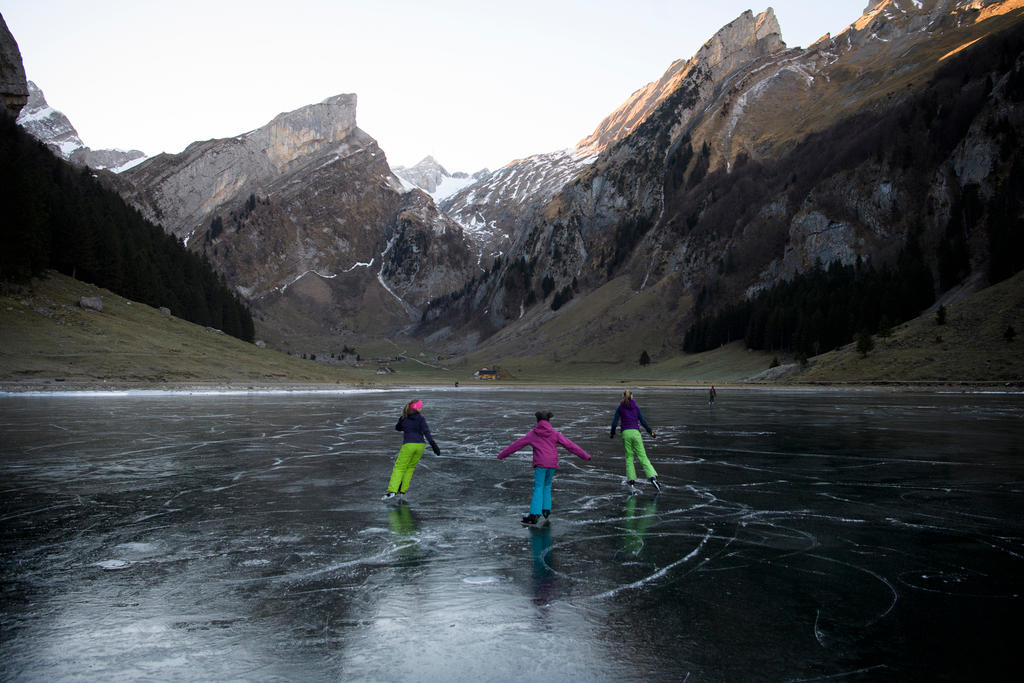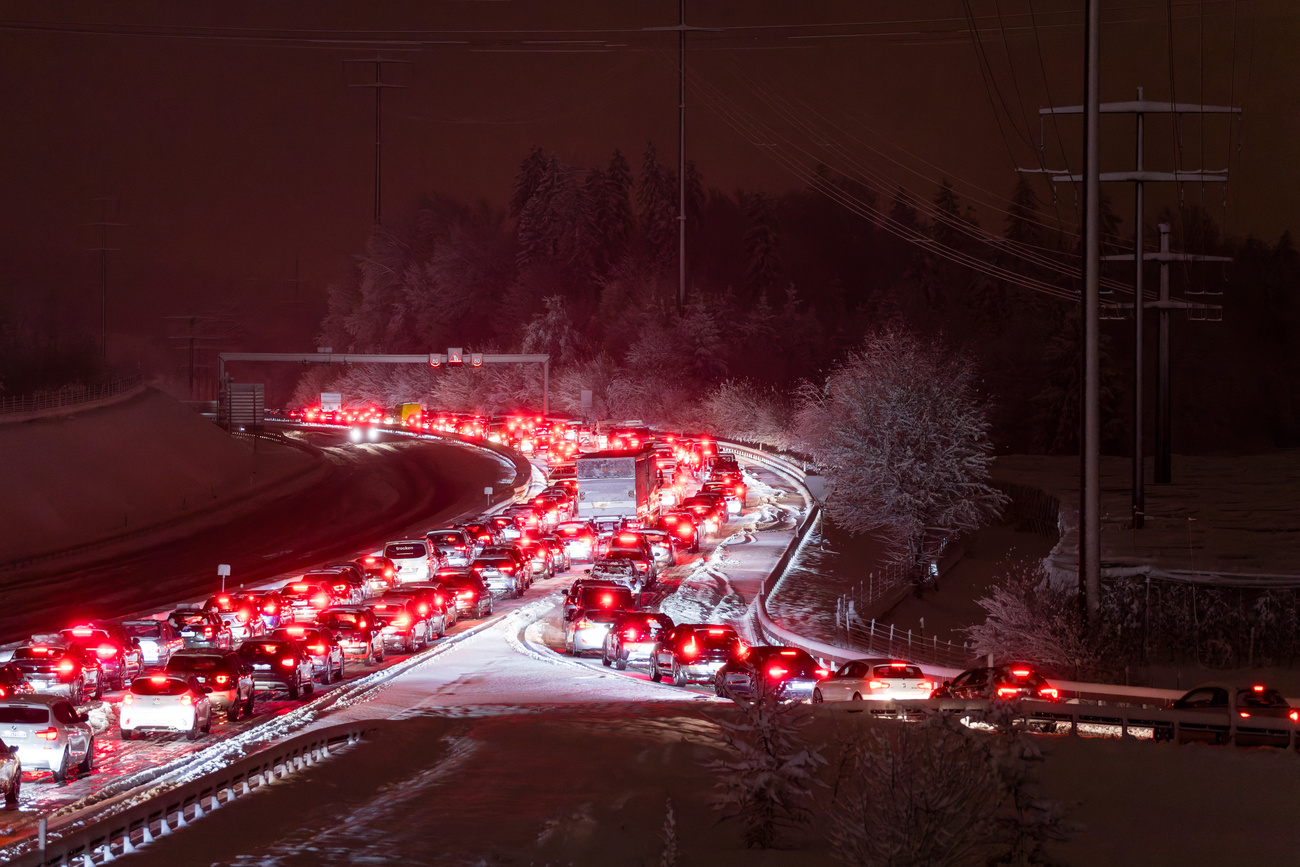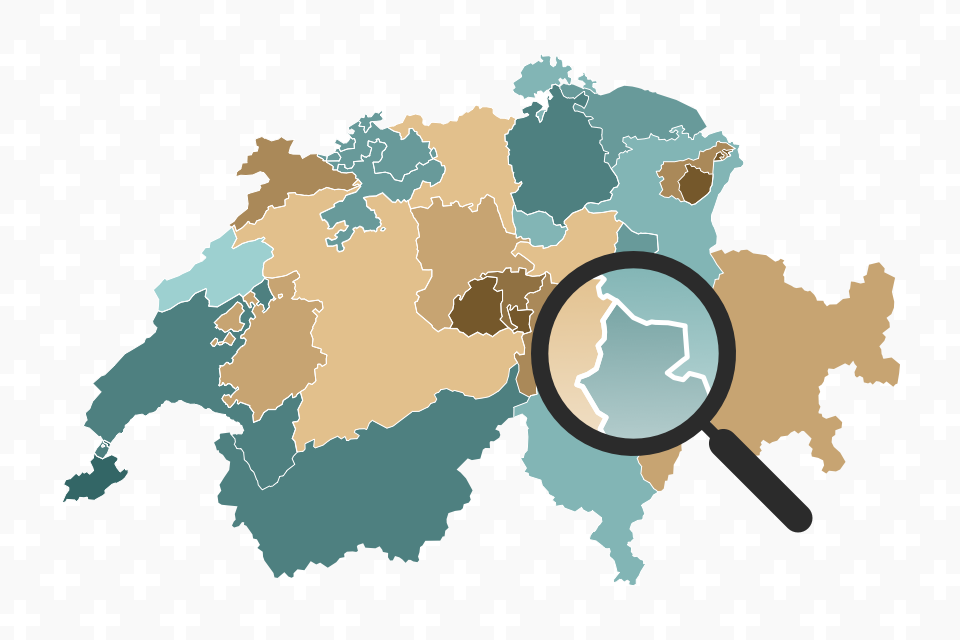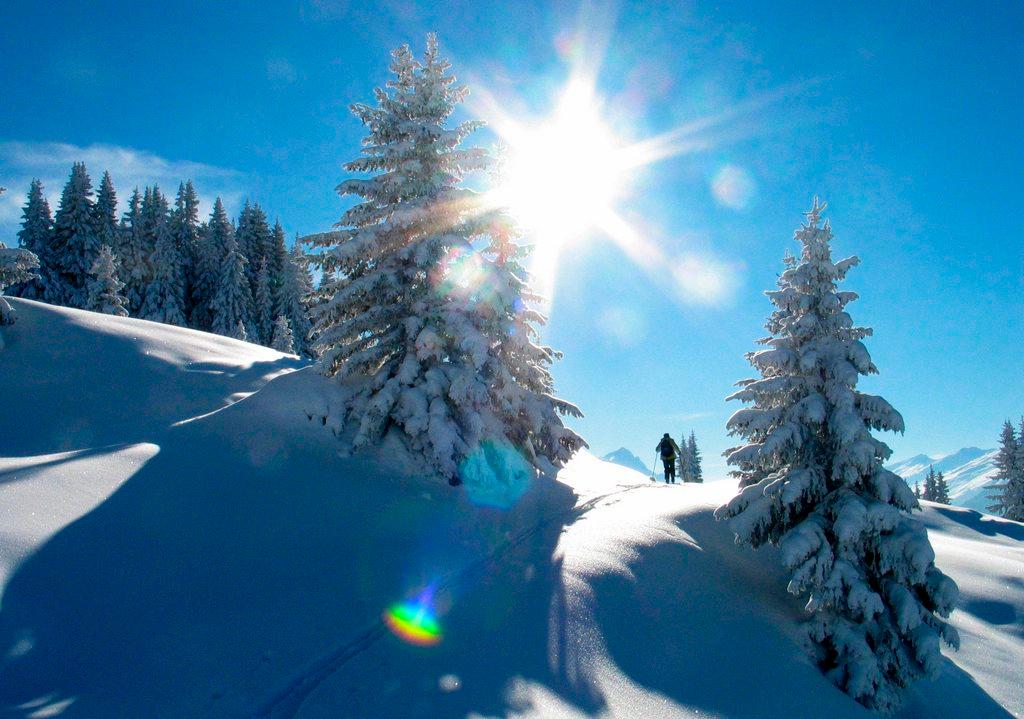Rare black ice on frozen Swiss lakes attracts skaters

The recent lack of snow combined with cold conditions across much of Switzerland has resulted in frozen mountain lakes that are attracting scores of ice skaters. It’s also helping the tourism industry find alternatives to snow sports.
Popular mountain lakes such as Appenzell’s Seealp lake, the Lago Bianco on the Bernina Pass, and the Oeschinen lake in the Bernese Oberland have been frozen solid for days, with little snow and bitter cold resulting in a surface of smooth, black ice.
It’s the second year in a row that such a phenomenon has occurred in Switzerland; the last time before that was nearly two decades ago.
PLACEHOLDER
The Oeschinen lake above the town of Kandersteg has seen an influx of visitors since the lake was opened to skaters on January 1, according to Christoph Wandfluh who has helped organise the offering.
“The lake freezes over every year, but the black ice phenomenon is rare,” he says, pointing out that black ice only happens when the lake freezes over without additional precipitation. Some snow has fallen on the lake in recent days, but the ice depth of more than 15 centimetres (six inches) has allowed small machines to clear the snow for continued skating. Wandfluh estimates that clearing the lake of snow will continue to be possible until there is about 40 to 50 centimetres of snow, at which point it will become too difficult to clean off.
Ice fishing and walking on the lake will continue to be possible even after the lake is covered in snow.
PLACEHOLDER
Bitter cold is set to continue in Switzerland in the coming days, with the town of La Brévine in canton Neuchatel having reported a temperature of nearly thirty degrees below zero (Celsius) on Friday.
The Swiss Rescue Society recommends that a lake have an ice depth of 10 centimetres before anyone walks or skates on it, and authorities at the Oeschinen Lake require at least 12 centimetres, according to Wandfluh. He says that the ice depth is checked once or twice per day to make sure it’s safe for visitors.
Other regions such as canton Zurich also have appointed authorities who regularly check the status of the ice and make sure it’s safe for visitors. However, other areas such as cantons Graubünden and Uri have adopted an “at your own risk” policy without systematic checks.
The Kandersteg region, where the Oeschinen Lake is located, is normally popular for cross-country skiing, sledding and some downhill skiing. Doris Kallen of Kandersteg Tourism told swissinfo.ch that offering alternative activities such as ice skating, hiking and even mountain biking resulted in decent visitor numbers and hotel stays in the area in the past few weeks despite the lack of snow.
“It may not look as pretty without the snow, but we have been able to offer a range of activities anyway,” she said.

In compliance with the JTI standards
More: SWI swissinfo.ch certified by the Journalism Trust Initiative











You can find an overview of ongoing debates with our journalists here . Please join us!
If you want to start a conversation about a topic raised in this article or want to report factual errors, email us at english@swissinfo.ch.